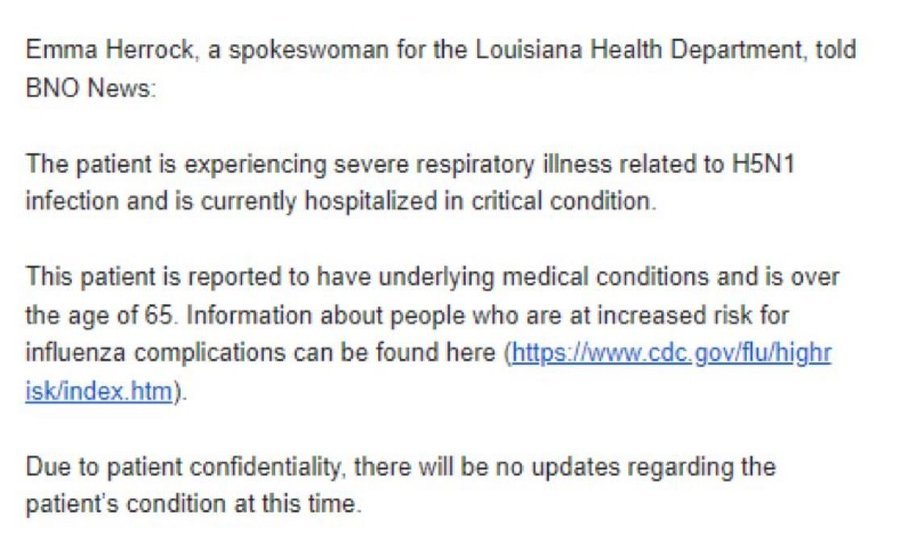The Centers for Disease Control and Prevention (CDC) has reported concerning findings regarding the first severe bird flu case in the U.S., identified in a Louisiana resident.
This incident has raised alarms due to rare mutations noted in the virus sample.
The mutations observed specifically affect the hemagglutinin gene, a vital component for the virus’s ability to attach to host cells.
Notably, these mutations differ from those found in nearby infected flocks, prompting questions about the virus’s evolution and spread.
While the detection of these mutations in the Louisiana case is concerning, the CDC has emphasized that the overall risk to the public remains low.
Importantly, there has been no evidence of human-to-human transmission, which suggests that the situation is not currently indicative of a wider outbreak.
However, monitoring will continue in light of parallels with severe infections observed in Canada.
First Severe Case of H5N1 Bird Flu Confirmed in Louisiana
The Centers for Disease Control and Prevention (CDC) has officially confirmed the first severe case of H5N1 bird flu in the United States, located in Louisiana.
This diagnosis involves a patient who is over the age of 65 and has existing underlying health conditions.
Currently, the patient is hospitalized and reported to be in critical condition after having contact with infected backyard birds.

Health officials have stated that, despite this serious incident, the risk of human-to-human transmission remains low.
The CDC is closely monitoring the situation and ensuring that preventative measures are in place to reduce the possibility of further spread.
The focus is on understanding any mutations that may occur as the virus adapts to new hosts, particularly with respect to human health implications.
Experts are keenly observing how the H5N1 strain interacts within bird populations and the potential for it to mutate.
While the immediate public health risk appears minimal, the evolving nature of this virus raises valid concerns.
As more cases can potentially arise, authorities stress the importance of vigilance and preparedness in addressing any future outbreaks.
Continued research and monitoring are crucial in safeguarding public health as the avian influenza spreads among animal populations.